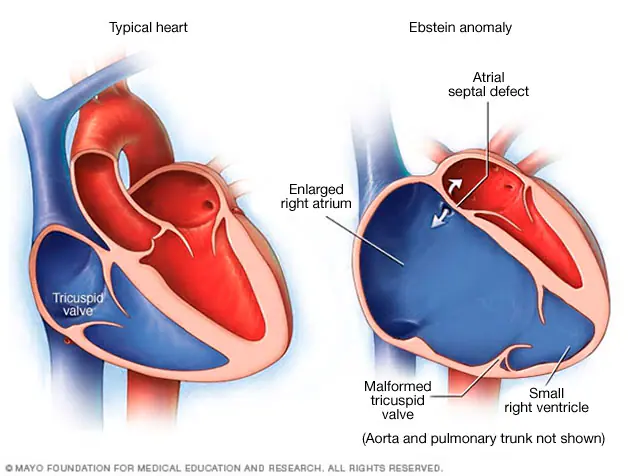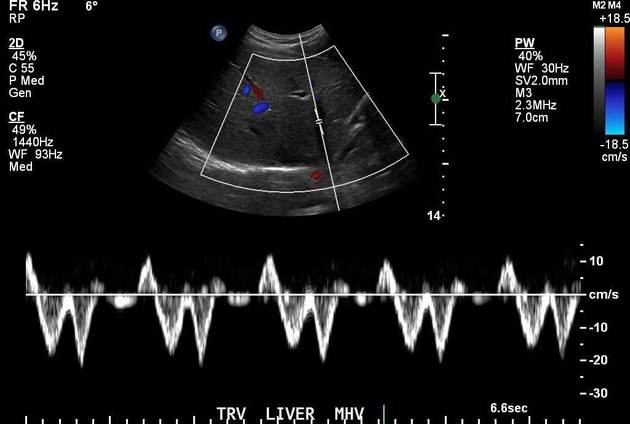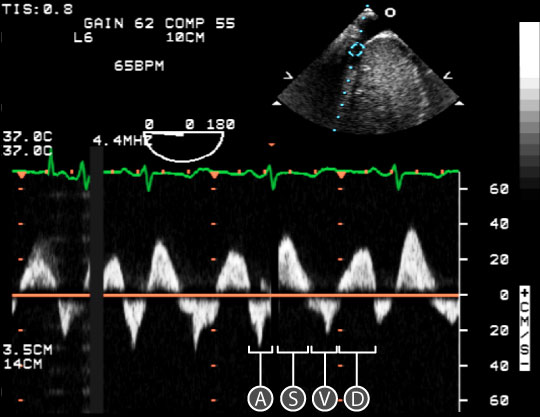Valvular regurgitation - MASTER SET
1/186
There's no tags or description
Looks like no tags are added yet.
Name | Mastery | Learn | Test | Matching | Spaced |
|---|
No study sessions yet.
187 Terms
Murmur characteristics
Low pitched
Diastolic
Increased with inspiration
PI murmur is called a
Graham Steel Murmur (Board question)
systolic murmurs are heard when there’s regurgitation with
Atrioventricular valves
diastolic murmurs are heard when there’s regurgitation with
Semilunar valves
Acute regurgitation always results in
pressure overload
Etiology (causes) 6
Pathologic PI is not frequent
MOST COMMONLY caused by pulmonary HTN
Leads to Annular dilation
Endocarditis
Rheumatic Heart Disease
Tetralogy of Fallot
Carcinoid
% of people with normal PI
40-87%
Pathologic PI
NOT FREQUENT
This valve usually doesn’t have a lot of problems
Why is it difficult to see the valve cusps on a 2D echo
Pulmonic valve leaflets are very thin
Pulmonic insufficiency directed towards the Tricuspid leaflet causes:
Diastolic fluttering on M-Mode
RV Volume overload on M-Mode causes (2)
RV Enlargement and paradoxical septal motion
Evaluate _______ & ________ of the PI Color doppler jet
EXTENT & AREA
Assess CW Spectral doppler jet _______ for _______
assess CW spectral doppler jet DENSITY for SEVERITY
Severe PI causes
Rapid equalization of RV and Pulmonary artery pressures

Regurgitation for PI is above the baseline and SEVERE PI IS DAGGER SHAPED
Rapid reversal
rapid desceleration
BAD BAD BAD!
Murmur - TV (2)
holosystolic
increase with respiration
Etiology (causes) TR (10)
Pulmonary HTN
Due to RV enlargement and Annular Dilation
can be caused by MV Disease or Pulmonary HTN
Rheumatic Heart Disease
Triscupid valve prolapse
Often associated with Mitral valve prolapse
RV Failure
RV MI
Carcinouid
TV is most affected by radiation
CHD
Marfans sydrome - poor connective tissue
Ebstein Anomoly
CHD
Trauma
Endocarditis
Pacerwire
Goes through the TV
Ebstein anomoly

Assessment of TR
Extent, area, direction of TR Jet
PW of hepatic vein in SUBC
Views for assessing TR
RVIT
PSAX
A4C
SUBC
RT FOCUSED A4C
A3C RT HEART VIEWS
Is PISA used often for TR
Nah bruh (rarely)
Vena contracta width severe for TR when its over
0.7 cm (7mm) SEVERE
Use TR peak velocity to assess
PAP
Severe TR
vena contracta
spectral waveform
hep vein
PISA
Vena contracta >0.7 cm wide
Dense spectral doppler waveform
early peaking
triangular shaped
Hepatic vein
Blunted systolic wave, systolic flow reversal
PISA Radius > 0.9 cm
RV Volume overload
Right ventricular englargement
Pardoxical septal motion
PISA Radius width
mild
moderate
severe
Mild: <or= 0.5 cm
Moderate: 0.6-0.9 cm
Severe: >0.9 cm

what does this show and why
MILD TR
Small color jet
round CW doppler
Systolic dominance in Hep vein
because LV is pushing blood through it

What is this and why
SEVERE TR
Big color jet
Steep and sharp reguritant CW Wwaveform
systolic flow reverasal in PW Hep vein
Dagger shaped high pressure that drops off quick
TR Due to RV enlargement and annular dilation common in what patient
IV Drug users because the dirty drugs hit the TV first
Severe TR is when there is more __________ flow than __________ flow
Severe TR is when there is more retrograde flow than antegrade flow

MODERATE TR
Systole and Diastole velocities are similiar

normal hepatic vein PW
Systolic is larger than diastolic

Hepatic vein FLOW REVERSAL
Look at systole! ITS GOING BACKWARDS BC PULMONARY PRESSURES ARE SO HIGH!!!
TR will causes a greater velocity in what part of diastole
TR = INCREASED E VELOCITY
Obtain peak CW TR for (2)
PAP
PISA Measurement
See what leaflets in these views
RVIT:
A4C
PSAX
TV
RVIT: Posterior & anterior
PSAX: Anterior & septal
A4C: Anterior & septal
primary regurgiation
Problem with the leaflets
secondary regurgitation
problem with the valve appartatus
examples of secondary regurtation
cor pulmonal
RT HF (W/ Embolos usually)
RV MI
Pacemaker wires going through TV
Pulmonary HTN
RV Enlargement
annular dilation
leaflets fail to coapt
right sided failure will lead to
left sided failure
which fuction usually leads to the other
systolic = diastolic?
diastolic = systolic?
Systolic = diastolic
Primary regurgitation
– problem with the valve leaflets, e.g., rheumatic, age related, inflammation, congenital, therapy.
• Functional or secondary –
– The valve morphology is normal but there is a problem with supporting structures, e.g., ischemic heart disease and papillary muscle dysfunction and annular dilation.
Chronic regurgitation
results in chamber dilation with normal pressures
Acute regurgitation
results in normal chamber size with a sudden increase in pressure
Chronic mitral regurgitation will eventually lead to
o pulmonary hypertension and heart failure Increased afterload over time will lead to left ventricular hypertrophy
Regurgitation leads to
volume overload.
Left Ventricular Volume Overload
dilated left ventricle and hyperdynamic function
Right Ventricular Volume Overload
dilated right ventricle and paradoxical septal motion
Stenosis leads to
pressure overload.
Spectral Doppler waveform density –
the more severe results in a more prominent or dense spectral Doppler waveform.
• Flow convergence or PISA
– the flow velocity before the valve – small or none with mild regurgitation and more prominent when more significant regurgitation is present.
• Jet –
jet area and length, central or eccentric.
• Vena Contracta –
– the narrowest part of the jet at the valve leaflet tips.

know dis
Definition: MR
AKA
CAUSED BY
• Leaking of the mitral valve during systole from left ventricle to left atrium
• Also known as mitral insufficiency
• Due to incomplete closure of the mitral valve
decreased heart function causes what for regurge
decreased regurgitation but thick envelope
most common symptom of MR
MURMUR
Blowing
high pithed
holosystolic
cardiac apex radiates to axilla
MR can eventually lead to
Right heart failure due to backup in the pulmonary veins into the RA Increasing PAP
TOO MUCH VOLUME
Etiology MR: Causes (6)
• Primary Mitral Regurgitation
• Functional Mitral Regurgitation
• Flail mitral valve leaflet
• Papillary muscle rupture
• Left ventricle
- ischemia, infarction, cardiomyopathy
Mitral Valve Apparatus
MR Increases PRELOAD which causes the LV to become
hyperdynamic
WHAT VIEW IS MVP MITRAL VALVE PROLAPSE DIAGNOSED FROM ONLY!!!
PLAX!!! ONLY!!!

FLAIL MV
Severe regurgitation
leaflet fails to coap usually due to pap or chordae problem
leaflet goes back into LA
JET GOES IN DIRECTION OPPOSITE OF AFFECTED VALVE
Barlows syndrome
MV problems from fibrous disease
primary MR
Primary Mitral Regurgitation
problem with
problem with the leaflets
causes of primary MR (4)
o Mitral valve prolapse
o Endocarditis
o Rheumatic heart disease
o Mitral annular calcification
causes of Functional Mitral Regurgitation (4)
Ischemic mitral regurgitation due to ischemia or cardiomyopathy
Flail mitral valve leaflet
• Papillary muscle rupture
• Left ventricle - ischemia, infarction, cardiomyopathy
MV Apparatus
any problem with these will cause MR
• Left atrial wall
• Mitral annulus
• Anterior and posterior leaflets
• Chordae
• Papillary muscles
• Left ventricular myocardium underlying the papillary muscles (tenting)
• Normal closure of the valve is at the annulus
Auscultation / Heart sound MR
High-pitched, blowing holosystolic murmur
Diseases of MV (6)
Myxomastous Disease - MV Prolapse
Rheumatic Disease
Endocarditis
Marfan Syndrome
Ischemic MR
Pap muscle rupture
Myxomatous disease – Mitral Valve Prolapse (5)
o Thickened, redundant leaflets and chordae
o Excessive motion and sagging into the left atrium in systole
o Mitral valve prolapse – minimal leaflet displacement
o Flail mitral valve leaflet – severe leaflet displacement
o Mid systolic click and mid-to-late systolic murmur
Rheumatic Disease
Thickening of the leaflet tips and restricted motion
Endocarditis
Thickening of the leaflet tips and restricted motion
Marfan Syndrome
Long, redundant anterior leaflet that sags into the LA in systole
Ischemic MR
functional MR
Caused by
Relationship to MI
What happens with PAP rupture
what can happen to MV leaflets
due to:
results in _____ of leaflets
MR is due to:
MV
o Functional mitral regurgitation – the leaflets are normal – includes mitral regurgitation caused by ischemia and dilated cardiomyopathy
o Cause by papillary muscle displacement and dilation of the annulus
o Most common complication of an MI
o Severe mitral regurgitation can occur with papillary muscle rupture
o Tenting of the mitral valve leaflets (normal closure is at the annulus)
o Due to regional wall motion abnormalities or dysfunction
o Restricted leaflet motion – abnormal valve closure
o Results in apical displacement (“tenting”) and incomplete closure of the valve leaflets (normal mitral valve closure should be at the annulus)
o Mitral regurgitation is due to left ventricular distortion and annular dilation
o Mitral valve bend is caused by the basal chord
Papillary muscle rupture (Partial rupture of the papillary muscle)
Comlication of :
results in
prognosis
o Complication of an acute myocardial infarction
o Acute, severe mitral regurgitation
o Poor survival
Ischemic MR caused by (6)
PAP Muscle displacement and dilation of the annulus
PAP rupture
regional WMA
Restricted leaflet motion-abnormal valve closure
LV Distortion
Annular dilation
What is the MC complication of MI
Ischemic MR
Pap muscle rupture can cause
severe MR
`Where is normal closure of MV leaflet tips
Annulus
What is it called when the MV closes distal to the annulus
tenting
tenting is _______ displacement which causes:
apicical displacement which causes incomplete closure
MV Bend is caused by what
basal chord
MR is due to
LV Distortion & annular dilation
The response to chronic volume overload on a chamber is
dilation with normal pressure
The response to acute volume overload on a chamber is
no dilation with marked increase in pressure
The initial response of the left ventricle to mitral regurgitation is
LV becomes hyperdynamic
Chronic mitral regurgitation
progression
wall thickness
affect on systolic function
LA
PAP
o Progressive left ventricular dilation
o Normal left ventricular wall thickness
o Irreversible decrease in systolic function in the absence of symptoms
o Left atrium gradually dilates with normal left atrial pressure
o Pulmonary artery pressure increases
intermitant MR
Due to ischemia
pap displacement
comes back to normal when ischemia is corrected
Acute mitral regurgitation
LA
Size/pressure
o Normal left atrial size
o Significant increase in left atrial pressure
can result in flail MV Leaflet
Two-Dimensional Evaluation: MR (5)
• Obtain careful, high-resolution imaging focusing on the mitral valve, chords and papillary muscles in both harmonics and fundamental modes in the parasternal and apical views
• Use magnification (zoom)
• Evaluate for flail mitral valve leaflet, mitral valve prolapse, mitral annular calcification
• Evaluate left atrial size
• Left Ventricle
How to evaluate LV 2D (3)
• Left Ventricle
o Evaluate left ventricular size and function - volume overload pattern
o Obtain end-systolic dimension
o Surgery needed with an end-systolic dimension greater than 45 mm and reduction in systolic function
Color Doppler Evaluation: (3)
color doppler jet
eccentric or central
vena contracta width
Color Doppler Jet Area
scale
settings
views
jet (2)
o Normal Color Doppler Nyquist Limit Setting: 50 – 60 cm/s
o Correct color Doppler gain
o Parasternal and apical views
o Length of mitral regurgitation jet
o Area of jet –
▪ Less than 20% of the left atrial area indicates mild mitral regurgitation
▪ Greater than 40% of the left atrial area indicates severe mitral regurgitation
o Area of jet –
▪ Less than 20% of the left atrial area indicates mild mitral regurgitation
▪ Greater than 40% of the left atrial area indicates severe mitral regurgitation
Eccentric or central
▪ The severity of mitral regurgitant jets that hug a wall is underestimated
– it is more severe than appears due to the Coanda Affect (the jet stays attached to the curved surface, i.e., left atrial wall).
▪ Henri-Marie Coanda – Romanian aerodynamicist
o Timing (early, mid, late) and duration
▪ Mitral valve prolapse will produce late systolic mitral regurgitation
Vena Contracta Width
where is the narrowest portion
what view
how to RES
mild
severe
o The narrowest portion of the color Doppler jet at the leaflet tips
o Parasternal long axis view - perpendicular to flow
o Magnify
o Mild = less than < 0.3 cm
o Severe = greater than 0.7 cm
Mitral Valve Inflow Doppler (LV Inflow)
o E velocity greater than 1.2 meters per second may indicate significant regurgitation with EF greater than 40%
o Deceleration time less than 150 milliseconds may indicate significant regurgitation
Continuous-Wave Doppler
o The jet is wider than the aortic stenosis jet – starts earlier
o More severe mitral regurgitation will produce a Doppler waveform that is complete and dark and triangular shaped